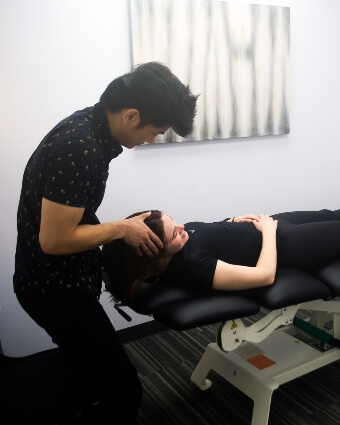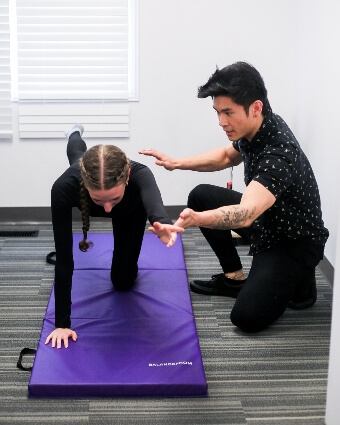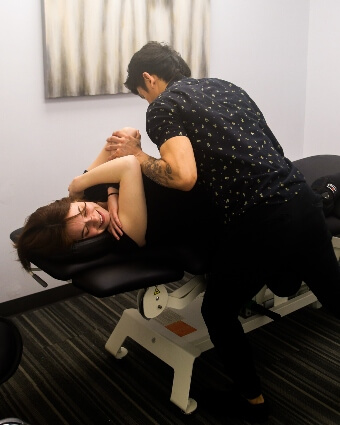Chiropractic Care in Cambridge
Our Helios Physiotherapy and Rehab approach to care is comprehensive, offering you a wide range of services tailored to your individual needs. For many clients, chiropractic care is integral to their care plan.
NEW CLIENTS
Care for the Musculoskeletal System
A chiropractor is a registered health practitioner and primary care provider for the musculoskeletal system, which includes muscles, ligaments, bones, and joints. Based on a chiropractic examination of your body, including orthopedic, neurological, muscle function, joint function, and radiographic testing, your chiropractor will diagnose mechanical disorders of your musculoskeletal system and create a customized care plan to correct those disorders.
Your care plan may also include adjunctive services such as muscle therapy, electrotherapy, lifestyle advice, exercise, and/or the recommendation of assistive devices.
Your chiropractor may also refer you to a massage therapist or physiotherapist if your condition can be improved by those therapies.
Help for a Range of Conditions
Chiropractic care can often provide relief and improvement of many musculoskeletal conditions, such as:
- Whiplash
- Acute or chronic conditions
- Fasciculations
Your care plan will include periodic re-examinations to assess your progress and ensure you move toward your goals. In addition, we focus on education, clearly explaining our approach to care and helping you understand how it can help restore your body’s ability to move and function optimally. We are happy to answer all of your questions!
What to Expect
Your spinal adjustments or manipulations involve moving the spine’s joints using manual or instrument-assisted methods; in some cases, you may hear a crack or pop sound when the joint moves, similar to when you crack your knuckles.
Minor, short-lived complaints of soreness are common after spinal manipulation. This therapy is typically safe, and serious side effects are very rare.
Restore Musculoskeletal Health Today
Contact us today to book your first appointment and take the first step to improving your ability to move and function.
CONTACT US




